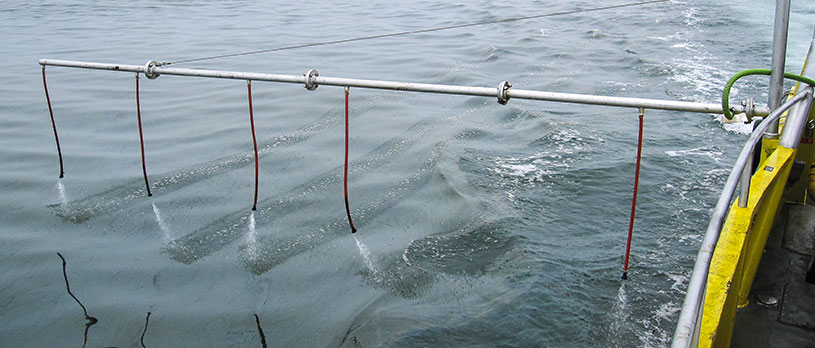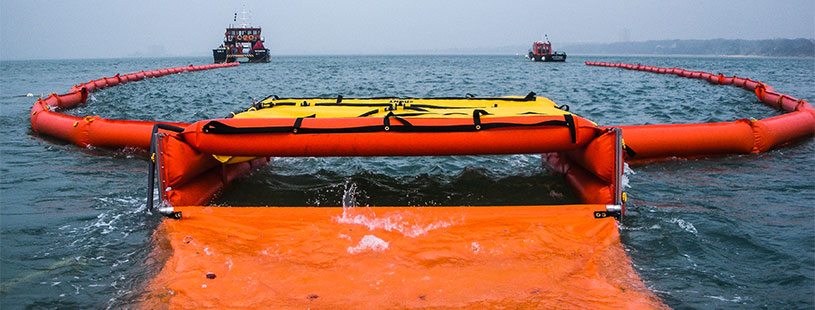When used effectively, dispersants can be an effective oil spill response strategy. And traditionally, aerial dispersant application has been the go-to solution for marine oil spills. But is there a better application method for coastal and offshore oil spills? We’ve found two options, Boom Vane Dispersant System and Neat Sweep, which provide high efficiency and low-cost dispersant application.
[PHONE] 1800 368 450 [Phone]
Vessel systems vs aerial systems
One of the major advantages of aerial dispersant application is range. By comparison, boat-mounted dispersant systems generally have only limited coverage and can be inefficient.
However, in recent years, two boat-mounted systems have emerged that have a much wider coverage (swath) and provide significantly more efficient use of dispersants:
BoomVane and BoomVane Spray

BoomVane is a device for deploying oil containment booms into rivers and other waterways by harnessing the power of the current. Along with its cousin, the BoomVane Spray, it provides responders with a number of advantages over aerial systems and conventional ship-mounted units:
- Wider spray width than conventional arms (20m)
- Dispersant is applied at correct droplet size and height for effective dispersion of the oil
- Dispersant is applied well away from the towing vessel and personnel
- Dispersant can be applied close into shore without putting vessel at risk (ideal for deep and high energy shorelines)
- High application accuracy
The BoomVane systems allow dispersant application at 4 to 5 knots and in wind speeds of up to Beaufort 5. With the base plates in place, the entire system is mobilised on board in less than 30 minutes - saving time, money and resources.
NeatSweep

The NeatSweep is a boom-based system towed by a vessel and a BoomVane, sweeping and funnelling oil into a Dispersant Application Zone (DAZ). Here, dispersant is applied neat (undiluted) and mixed with the oil.
A dispersant monitoring processor controls the rate of dispersant application by sensing the speed of the system, adjusting the rate of spray accordingly. This increases the accuracy of application reducing, the volume of dispersant that would be wasted through evaporation, misting, and mis-targeting (as is the case with aerial and conventional vessel systems).
The dispersant is applied hundreds of meters behind the vessel, decreasing the risk of exposure to response personnel. The NeatSweep also allows large payloads to be delivered as the dispersant is carried on the towing vessel.
The benefits
These two vessel systems provide massive deployment cost savings over aerial systems as well as improving efficiency. That's partly because boats provide a much faster response than aircraft. Vessels are usually readily available and are easy to load and deploy.
However, BoomVane and NeatSweep have removed one of the major limitations of vessel-based dispersant spraying - range. Able to apply dispersant very accurately to large areas of a slick, they essentially offer a best-of-both-worlds solution that:
- Save loading and unloading time
- Make your containment operation simpler
- Offer simple, effective deployment
- Save on wasted dispersant
For more on BoomVane and NeatSweep, call 1800 368 450.
Must Read
SpillPro on 24 February 2025
Why Spill Readiness Matters
A spill isn't just an inconvenience. If not handled properly, it can lead to safety hazards, environmental damage, and compliance issues. By equipping your site with the right spill response solutions ...
Read moreSpillPro on 30 October 2024
Choosing the Right Containment Boom
Containment booms are the first line of defence in any spill response plan. When a spill occurs, swift and effective containment is crucial to minimise environmental impact and financial loss. Selecti ...
Read more